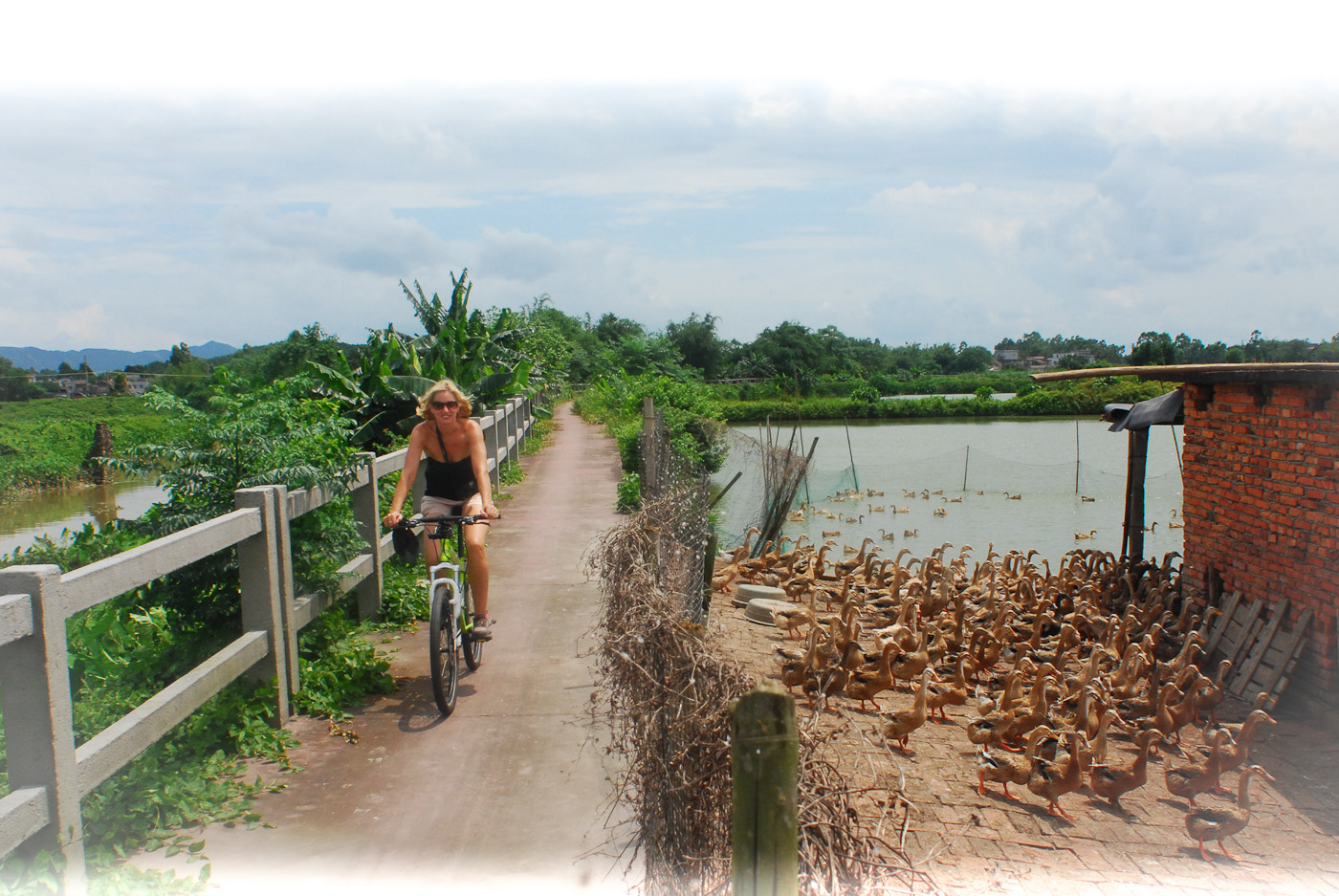Disneyland could well be the model for cultural heritage preservation in historic Chikan, Guangdong’s prettiest and most real old town.
A real old town is becoming a rare species in China, and you only have one month left to see this one.
Let me set the scene:
The Diaolou (watch towers) and baroque mansion architecture (yanglou)of Kaiping, one of the the four(traditional overseas jumping off points) counties in Guangdong – are an architectural snapshot of the first era of wealthy returnee Chinese emmigrants wanting to show off their “journeys to the west” and the little chunks of the Gold Mountain that they’d acquired in America, Canada and Australia.
Chinese left the rocky rice fields of delta country, jumping aboard boats at the port of Chikan on the Tan River, slipping out into the Bai He Channel, smuggling themselves through the mist along the braided estuaries of the Pearl, out through to Hong Kong and then onto international steam ships – disobeying prohibitions on travel from the Emperors in the North.
Many came back to help build the new republic (post 1911) drawing upon science, technology and other good things such as Art Deco design, learned in the West. Roman archways, doric columns, baroque stucco mouldings, tuscan-cupolas, and swallows nest widow watches are just a few of the features they blended into their traditional ancestral halls, and added as crowns to the traditional watch tower architecture. Art Deco star bursts and ziggurats are particularly popular in the town house style arcade home. These are spread across the Kaiping countryside , but nowhere near as concentrated as the Port Town of Chiakn with its porticoed streets. and grand water frontage.
On a visit three years ago, this was a bustling little town with great street markets, museums, two grand libraries of two clans having a library face-off, and open house in a number of mansions with custodians descended from these very early seekers of fortune from the famous Gold Mountains over the sea.
They hey-day of the Diaolou would have been not much longer than twenty years ( most seem to date from 1917) with Japanese soldiers coming along to throw the first of many buckets of water on this East meets West cultural experiment.
There must be ten thousand more stories of escapes along the misty waterways of the Pearl down to Hong Kong in the ensuing years starting through the Great Leap Forward and the Cultural Revolution, when wealth, westward thinking, and bourgeois frippery were definitely not the fashion.
About tren buses a day go directly between Hong Kong and Kaiping, such is the relationship between these places.
My last post post 4 years ago (2014) called the Guangdong Greenway to the Kaiping Diaolou celebrated the brilliant addition of a shiny new series of bike paths linking up the UNESCO listed sites of Zili, Li Yuan and Majianglou which we visited on bike from our base in Chikan. The Greenway had been painted bright green, and bright red in some places, with good signage to the more significant sites.
Four years later the paint has all but faded, most of the sign posts are broken, the inter rice paddy pathways now heavily overgrown with bananas and hibiscus, burr marigolds and elephant grass that whips your arms and face as you speed through. They are still rideable if you can find them – and a lot of fun – but seem destined to return to being just plain old farmers pathways which a big down grade from the noble sounding “Guangdong Greenway”.
The imminent destruction of Chikan
Tribe of Diaolou in Chikan was the centre of bike travel culture on our visit four years ago. Its was a good funky hostel with cheap rooms and a big bike-shop next door, handing out maps that were not too hard to navigate.
This year we’d been invited up by Peter Stuckey and Rocky Deng , members of the Asiatic Society in Hong Kong, to stay at their new renovated light globe factory hotel, built next to the old Great Leap Forward Rice Granaries in Tangkou – about 5 km from Chikan. This is their second tho at heritage preservation, the first is a very sensitive restoration of the nearby Cangdong Diaolou, ancestral halls and temples.
Knowing my desire to get a “Return from the Gold Mounation Cultural heritage Bike Ride up and running, they took us up to see what had happened to Chikan since my last visit.
Shock horror.
Bulldozers are hovering around the edges of the town, sitting atop piles of freshly demolished mid twentieth century rubble. The entire waterfront and old film city at Chikan has been cleared of its residents , and bamboo scaffolds erected in front of the buildings. Peter tells me that the green shade cloth in front of some of the buildings indicates those who went willingly – who’ve accepted the pay out from CITEC – the developer.
If they cleared out early they were promised 15 percent more than those who refused to go..
The next day, Pam (my recce partner) and I, re-visted the Chikan twice… first in the early morning on a stab at a riverside ride.. noting a few hold out dim sum joints, with the colourful old Chikanese, drinking tea beneath the crumbling stucco and kapok trees.
Since we’d missed the Green way link up in the morning ( we couldn’t find the entrance), we came back again in the evening.
The shops were all but deserted, and depressed , lost looking locals wandered the streets. There was one pop-up pancake stall doing a brisk trade, next to a woman grilling tofu and green peppers. Three school boys at a low table were eating a soupy desert made with lots of different mung beans, told us that all the dishes here were a pretty much all that remained of a once vibrant street food scene for which Chiken was famous, and that the desert they were eating was doubly famous as the vendor had just been released from three months in gaol for her part in resisting / protesting the forced evictions in town.
The boys were from a school in Kaiping.
They’d caught the bus twenty minutes down the road just to eat this desert. They offered to we-chat in our order, as the woman’s ground level shopfront like all the others has been closed, and she was carrying on the business from her up-stairs hold out.
Within a month, this will all be gone said the boys.
Just sixteen years old, and even they were lamenting the loss.
Citec the developer will no doubt keep the river front facade. They are famous for built-from-the-ground-up-Ye-Olde-Townes, but incredibly this one does not include the local residents at all.
Citec will create the tourist experience themselves. Bubble tea for all.
http://www.scmp.com/news/china/economy/article/2106677/families-whove-lived-old-chinese-town-generations-being-kicked
It was a sad story to go with such a sweet (and healthy) desert.
Pam and I cycled back to Chiken once more to capture the morning light over Chikan fearing this would be the last chance. Surprisingly there is a lively morning market where we brought famed herbal sweets, pineapples and a very down-market dims breakfast.
Get there now is the very simple message of this post!
Numerous buses run from Hong Kong (4 hours), Shenzhen, and Guangzhou every day.
Bike Aways will quickly construct a bike trip featuring Chikan as its Gold Mountain, as opposed to the fools gold to come, on the first or second weekend of May.
Hopefully Chikan is still there.
We will stay in the Fantastic New TK-Space Hotel, eat clay pot rice, cook up the local variant of beggars chicken (stuffed with wild mushrooms); eat tonnes of local sweets, and have story time amidst the diaolou in between bike rides along the rice paddies.
Stay tuned for dates and trip details. Photos coming soon.
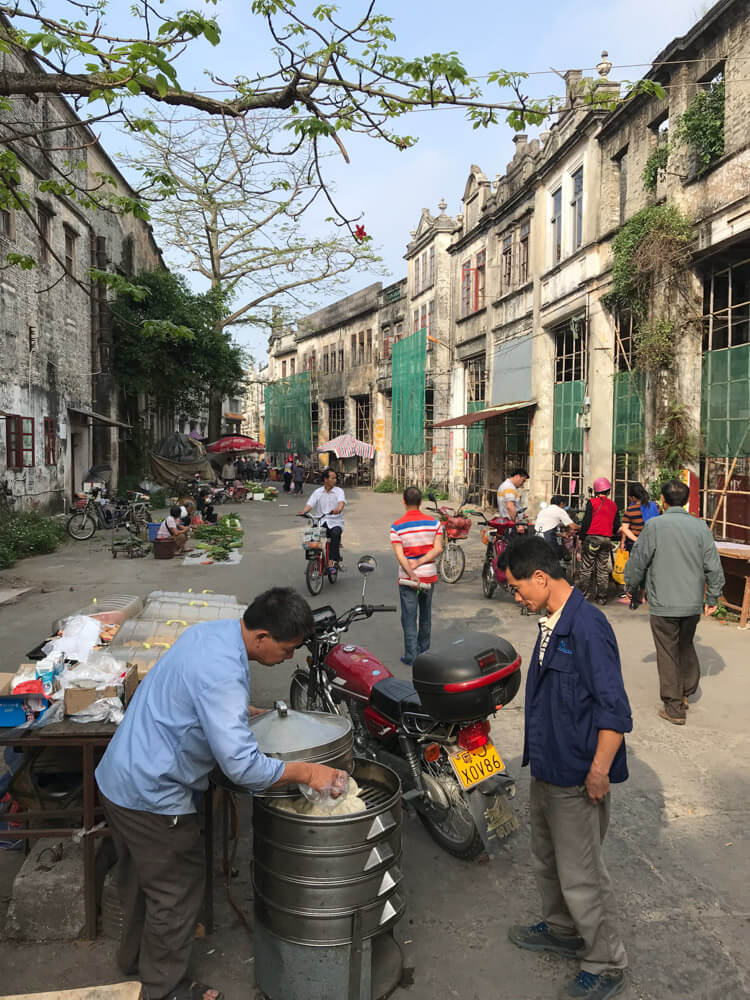
Bike Aways Rece Ride Through Chikan in the Kaiping Diaolou District
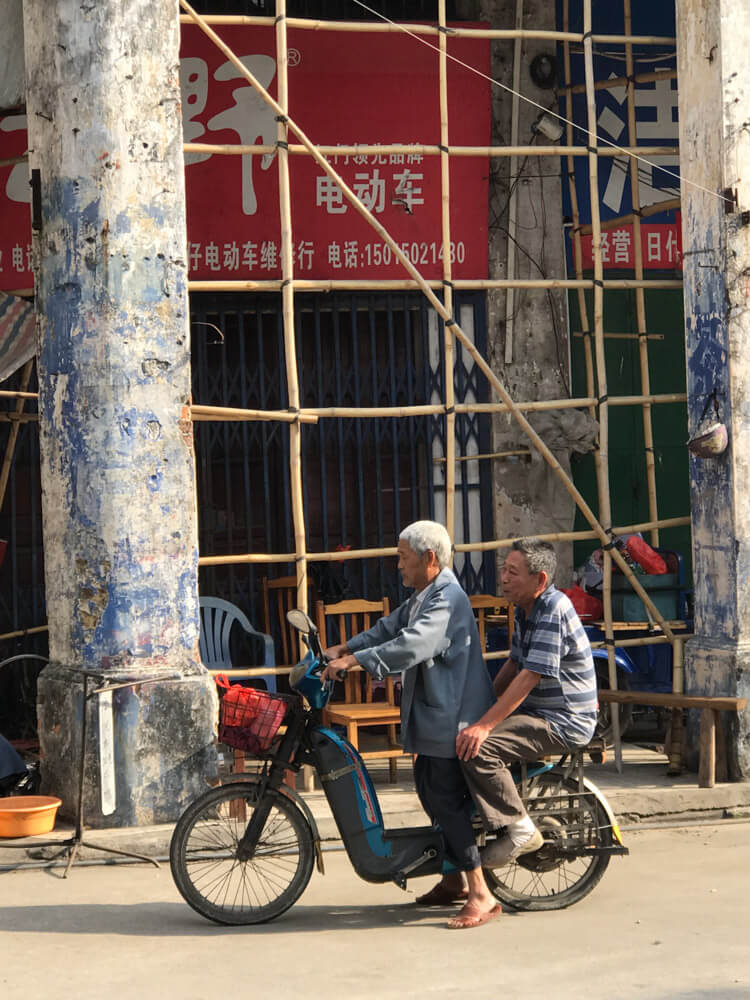
Residents of Chikan. Bamboo scaffolding symbolises the blockading of businesses who are no longer able to operate. A few hold-out residents still live upstairs.
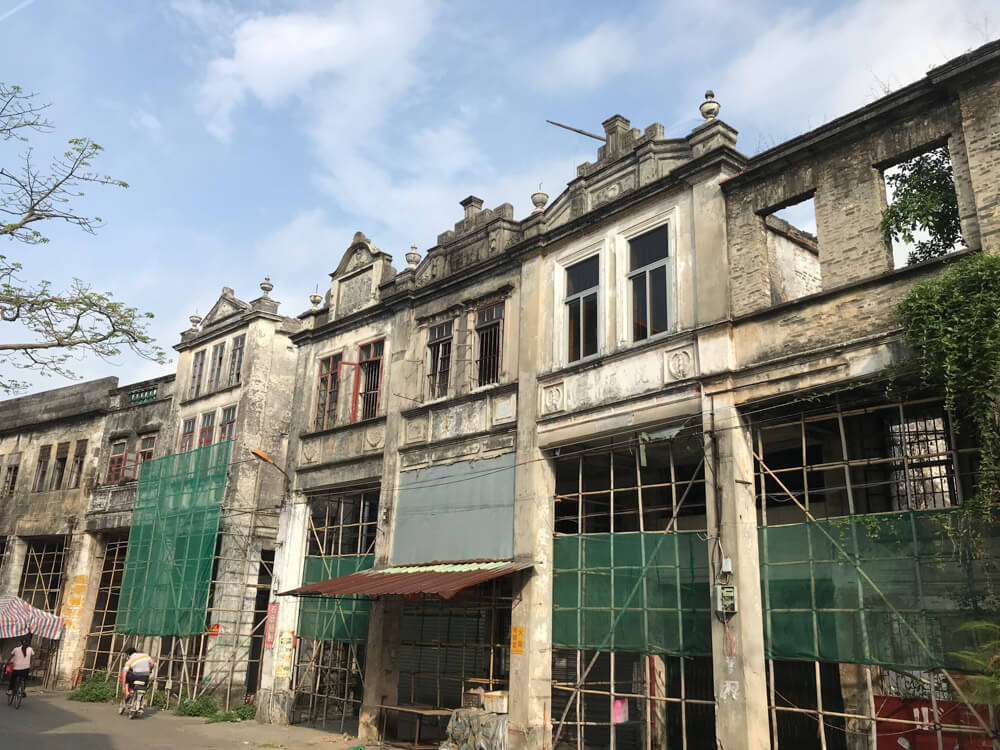
Green shade cloth means the local residents have accepted the developers deal and moved on.
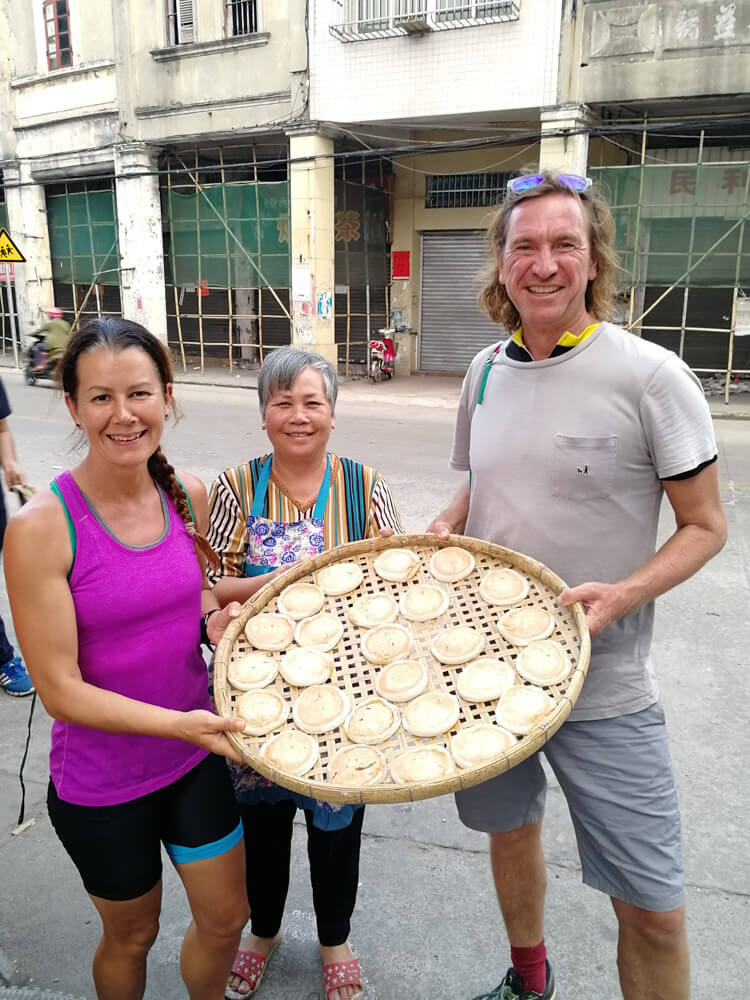
Chikan Shah bing pancakes cooked over coal. This lady is a hold out, selling cakes on the street despite developers urging people to move on. They are delicious.
